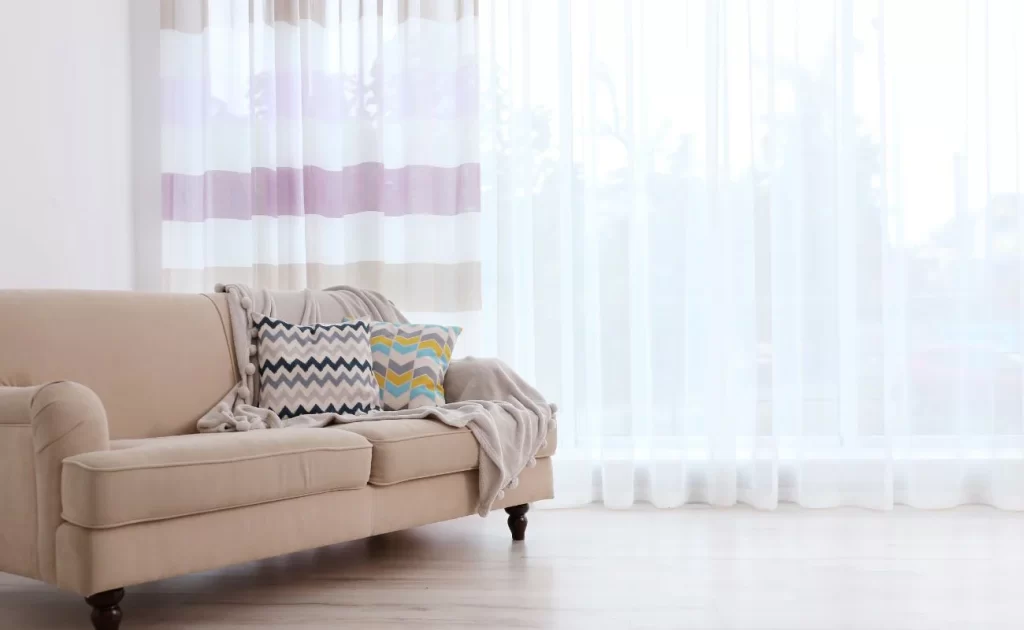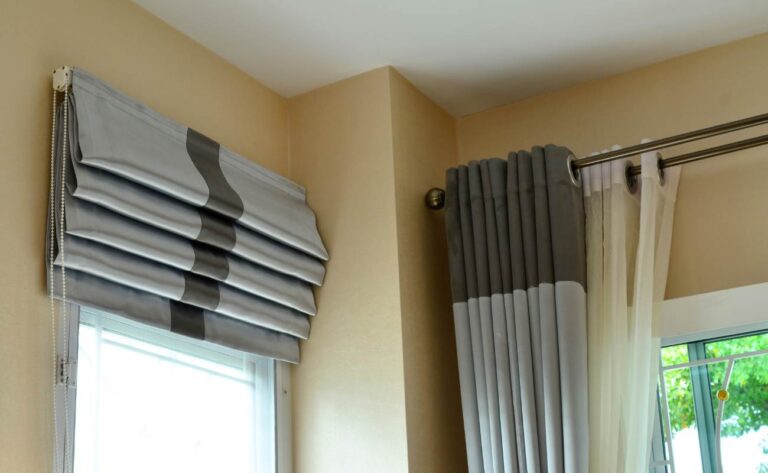Table of Contents

You’ve painted, furnished, and accessorized, yet something still feels unfinished. That final polish often comes down to one deceptively simple decision: how to choose curtains for living room windows. The right drapery frames your view, balances light, and ties every design element together—while the wrong choice can undercut all your hard work. Ready to get it right? Let’s dive in.
At a Glance: Your Curtain-Selection Checklist
- Clarify the room’s purpose: daily TV haven, bright social hub, or formal parlor?
- Measure accurately—both width and height—before ordering.
- Match fabric weight to function (sheer vs blackout).
- Curate color & pattern to complement existing décor.
- Pick the perfect length & fullness for a luxurious look.
- Layer like a designer using double rods, sheers, or shades.
- Finish with quality hardware that supports the style.
Bookmark this list; you’ll reference it often as we explore each step in detail.
1. Assess How You Use the Space
Start by asking yourself two questions:
How much natural light do you need?
- Abundant daylight lovers: Opt for translucent linens, cotton voiles, or unlined blends.
- Movie-night devotees: Choose medium-weight fabrics with blackout or dim-out lining to control glare.
- South-facing sunrooms: Consider UV-blocking linings to protect furnishings.
How private should the room feel?
If your living room sits street-side or faces close neighbors, you’ll appreciate double-rod layering: sheer panels for daytime privacy plus heavier drapes to close at dusk.
2. Measure Twice, Buy Once
Nothing ruins a new curtain investment faster than panels that fall short—literally or figuratively. Grab a steel tape measure (not a stretchy cloth one) and follow these rules:
- Mounting width: Measure the full width of the window frame and add 8–12 in (20–30 cm) on each side so panels clear the glass when open.
- Fullness factor: Multiply the finished rod width by 1.5 – 2× for lightweight fabrics and 2 – 2.5× for medium/heavy fabrics to achieve graceful pleats.
- Mounting height: Hang rods 4–6 in (10–15 cm) above the frame—or closer to the ceiling for a dramatic, room-heightening effect.
- Panel length: Decide between
- Floor kiss (¼ in above the floor) for tailored modern rooms,
- True floor length for classic elegance, or
- Puddle (2–6 in on the floor) for romantic, traditional schemes.
Record every measurement in a dedicated note—your future self will thank you when ordering.
3. Select the Ideal Fabric and Weight
Curtain textiles fall into four broad categories:
Fabric Type | Best For | Pros | Cons |
Sheers (voile, gauze, lightweight linen) | Maximizing daylight, layering | Airy, casual, inexpensive | Minimal privacy, limited insulation |
Medium (cotton, poly-cotton, lightweight velvet) | Everyday living rooms | Versatile, easy to maintain | Moderate blackout |
Heavy (velvet, jacquard, wool blends) | Formal or drafty spaces | Excellent insulation, luxe look | Higher cost, may overshadow minimalist décor |
Performance (sun-out, thermal, noise-reducing) | Bright, busy streets | Function-first protection | Fewer color/pattern options |
Match weight to climate, sun exposure, and aesthetic goals. For example, breezy coastal homes benefit from airy linens, while urban lofts may need sound-dampening velvets.
4. Choose Colors and Patterns That Anchor the Room
Start with the largest pattern already in the space—perhaps your rug, sofa fabric, or accent wall. Curtains should either:
- Echo one of its secondary colors for a cohesive palette, or
- Contrast with a complementary hue to create intentional drama.
Safe yet Stylish Approaches
- Tone-on-tone neutrals (oatmeal linen against greige walls) enlarge small rooms.
- Soft vertical stripes elongate low ceilings.
- Micro-prints or subtle textures add depth without busying the eye.
Bold Moves
- Large-scale florals or geometrics can become a room’s focal point—ideal if other elements are minimal.
- Color-blocking at the hem grounds tall windows while leaving upper portions airy.
Remember: You see living-room curtains daily, so choose a palette that sparks joy, not regret.
5. Nail Length, Fullness, and Header Style
A designer look hinges on three often-overlooked details:
- Length (covered earlier)
- Fullness: Panels should gather generously even when drawn closed—no flat, stretched fabric.
- Header style:
- Grommet or eyelet tops create crisp, modern waves.
- Pinch or French pleats offer formal symmetry.
- Rod pockets feel casual and work well with lightweight fabrics.
- Tab tops lend relaxed charm but may be harder to slide.
If you love flexibility, pick drapery rings with clips—you can swap panels easily when seasons or tastes change.
6. Master the Art of Layering
Designers rarely rely on a single fabric. Layering adds dimension, function, and an unmistakably curated vibe.
Two Classic Layering Formulas
- Sheer + Opaque Panel
- Sheer stays closed for daytime privacy; opaque panels slide shut for nighttime coziness.
- Roman Shade + Decorative Side Panels
- Roman shade handles light control; stationary side panels frame the window and hide shade hardware.
Hardware Hint: Use a double rod or a combo of an inside-mounted shade plus an outside-mounted rod to keep layers looking intentional, not cluttered.
7. Pick Hardware That Pulls It All Together
Curtain rods, rings, and finials are the jewelry of window treatments. Choose a finish that echoes existing metal accents (think lamp bases, picture frames, or door hardware) without being overly matchy-matchy.
- Matte black grounds bright spaces and pops against white walls.
- Brushed brass warms cool color schemes.
- Polished nickel suits contemporary and traditional furnishings alike.
Select a rod diameter proportionate to panel weight—light sheers can hang on ¾ in rods; heavier velvets often need 1¼ in or thicker.
8. Installation Day Dos and Don’ts
Do
- Pre-steam or iron panels to remove packing creases.
- Use a level when mounting brackets to prevent a visual slope.
- Employ wall anchors in drywall for security.
- Enlist a second set of hands—curtain rods seem to grow longer once you’re on the ladder.
Don’t
- Skip measuring bracket spacing. Uneven brackets lead to a sagging rod.
- Assume “standard” heights fit every home—ceiling heights vary.
- Leave panels untrained; instead, fold pleats neatly and tie loosely with ribbon for 48 hours so the fabric “remembers” its new shape.
9. Seasonal Switch-Ups and Maintenance
Your living room’s needs change throughout the year:
- Spring/Summer: Swap heavy drapes for breathable cotton or linen.
- Fall/Winter: Re-introduce thermal-lined panels to keep drafts at bay.
Wash or dry-clean according to fabric care tags—generally every six months, or more often if pets and kids are frequent couch companions. Vacuum monthly with a soft brush attachment to reduce dust buildup.
Your Living Room, Transformed
By now, you know exactly how to choose curtains for living room comfort, style, and practicality. Armed with precise measurements, an understanding of fabric weights, and an eye for color coordination, you’re poised to elevate your space from “almost finished” to magazine-worthy. Measure today, order with confidence, and enjoy the instant warmth well-chosen drapery brings. Your living room—and everyone who spends time in it—will thank you.



